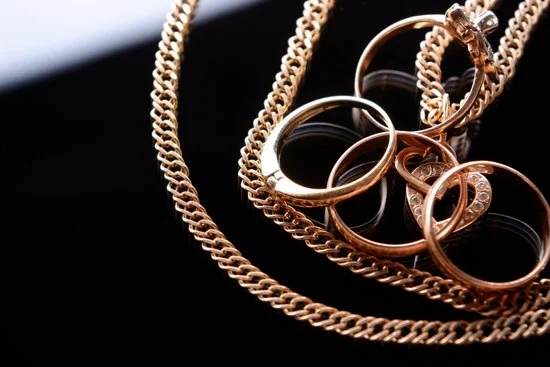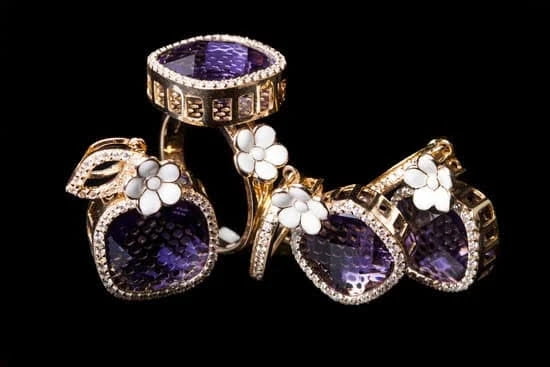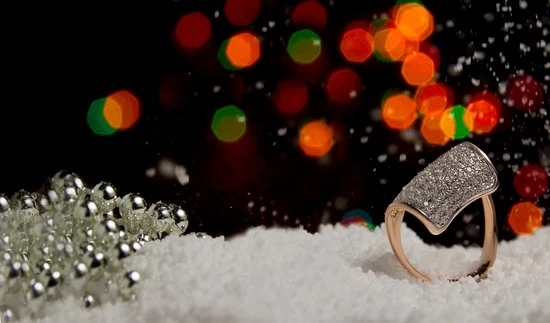Introduction
The 20th century saw some of the most innovative and beautiful jewelry trends evolve. One style of jewelry that was popular in the late 20th century was ruby rings. They were fashion-forward and sleek, yet timeless, making them an ideal choice for a variety of occasions. Whether one is looking for a pop of color to adorn an everyday outfit or an elegant piece for a special event, ruby rings from the 20th Century have you covered. In this article, we’ll take a look at some of the most influential jewelry collections and explore why ruby rings remain so popular today.
From Art Deco to Retro Modernist styles, during the 20th century there was no shortage of fresh takes on traditional design elements. Some pieces feature intricate details such as filigree work or filigree cutouts to form delicate designs. Others focus on minimalistic approaches with simple shapes and solitary rubies set in precious metals. You can even find artful combinations like vintage rock clusters and bold geometric settings that show off these iconic gems in all their glory.
These diverse designs helped make ruby rings fashionable throughout much of the century, as well as current favorites with modern tastes — whether they feature a traditional eternity band studded with small stones or they come in larger sizes boasting one eye-catching stone created using powerful ruby treatments like heat treatment and lead glass filling techniques . Iconic brands such as Cartier showcased elegant styles crafted from platinum or gold which are still coveted by luxury shoppers today; whereas costume jewelers offered affordable pieces with bolder statement designs that appeal to more modest budgets but still convey timeless glamour befitting a celebration or special night out.
Art Deco Ruby Rings
To truly appreciate art deco ruby rings, one needs to look back in time to the glamorous era of the 1920s. The Art Deco movement began in Paris and quickly caught on around the world as a new way to reinvent traditional jewelry designs. It became especially popular in the United States during the Roaring Twenties, when women were becoming more free with their style choices and embracing bold fashion statements. During this period, pieces such as Art Deco ruby rings were crafted to signify wealth, sophistication and glamour.
The Art Deco aesthetic was characterized by its steep curved edges, geometric shapes and use of unexpected stone combinations. Ruby was especially favored by this movement due to its vibrancy and rich hue, which could be set against lighter stones such as diamonds or pearls for maximum contrast. These ruby rings also often featured clustered stone arrangements – such as an Asscher-cut ruby at its center surrounded by a halo of tiny diamond chips. This served to enhance the sparkle of each individual gemstone while creating a beautiful piece that is still desired even today. Unlike other common styles from the 20th century, these Art Deco-era ruby rings conveniently stand the test of time and remain timelessly elegant regardless of current trends in jewelry design.
Retrospective Rings
Rings of the 1950s have a special allure, with traditional designs that capture the spirit of the time. Retrospective rings are a popular trend in 20th century jewelry styles and they remain stylish to this day. The most iconic ruby ring features tiers of diamonds leading up to a central stone, representing the pinnacle of diamond elegance. Other common jewelry pieces feature Art Deco inspired designs with geometric patterns, giving you a vintage feel without compromising on style. The bold cuts in these pieces lend them a unique charm that is still fashionable today. Additionally, many ruby rings of this era feature intricate filigree engraving along the outer bands, or clusters of small stones set against larger sparkling stones for an eye-catching look. Whether featured as single statement pieces or combined together for an even more striking visual impact, these rings are perfect for expressing your individual personality and aesthetic sensibilities.
Abundant Gems of the 1970s
The 1970s saw some of the most vibrant and diverse fashion trends of the 20th century. Unlike the minimal styling of the 1960s, fashions during the ’70s featured bright colors, unique patterns, and attention-grabbing silhouettes. One trend that stood out in particular was jewelry. Ruby rings that were bejeweled with other semi-precious stones such as sapphires and emeralds became a popular statement piece. Whether they were large and costume-like or made from more traditional materials, ruby rings created an elegant air of luxury and glamour. Other precious gems such as quartz, tourmaline, topaz, peridot and amethyst all enjoyed their moment in the spotlight, but it was ruby rings that grabbed everyone’s attention. Not only did they add a touch of sparkle to any ensemble – they also acted as a signifier of power and wealth since rubies had been so highly valued since ancient times. So whether worn with bell bottom trousers or your favorite wrap dress – there’s no denying that taking on this red gem trend was one of best aspects of ’70s fashion!
Heirloom Rings of the 1980s
The 1980s saw a return to appreciation for precious gemstone jewelry, such as ruby rings. The increasing availability of gem-quality rubies in the 20th century made these beautiful stones easily accessible to a new generation of then-trendy women, who preferred white gold and copper-colored diamonds over more traditional yellow gold and diamond combinations. This shift in taste enabled jewelers to reach out to a much broader customer base. Ruby ring styles varried greatly, ranging from solitaire with prong settings in single, three and five stone designs, to large cocktail rings featuring many colorful gemstones stacked together.
The idea of “heirloom” jewelry also grew popular during this period, with women looking for rings that could be passed down within families or sentimental gifts for special occasions. This encouraged jewelers to create classic vintage styles featuring rubies paired with sapphires, emeralds and other colored stones set in timeless designs. These heirloom pieces often featured intricate metal work reminiscent of baroque and rococo influences from earlier times. Prongsettings were typically used for larger stones, while delicate claw settings allowed for flowers or detailed scrollwork on smaller gems accents which added texture for visual contrast and beauty that today remains desirable.
Statement Pieces of the 1990s
The 1990s was a dramatic decade when it comes to fashion, especially jewelry. Throughout the 1990s, ruby rings became a hot commodity, as more and more people sought out statement jewelry pieces to make their look really stand out. Big earrings and elaborate necklaces with rows of rubies were some of the most popular trends of the 90s. Some rings even featured large clusters of rubies in an ornate design that encircled the finger for an eye-catching display.
While large pieces were always appreciated during this time, smaller designs weren’t forgotten either. During the late 90s, single stone ruby rings with delicate settings increased in popularity among those who wanted just enough bling without being too bold or showy. These beautiful rings also often featured other gemstones in varying shapes set around a bright ruby center that would make a statement without any extra fuss or fanfare. As the new millennium came around, simpler styles were being embraced such as solitaire style settings featuring just one large ruby on top of slender bands made from silver, gold or platinum. With smaller bands and designs taking hold towards the end of the 20th century, these symbols of love still remain popular choices for engagement and wedding rings today.
Present-day Ruby Rings
Ruby rings, especially those made of real rubies, remain one of the most popular diamond jewelry pieces for the 21st-century woman. These jewels offer a classic style with a modern twist, combining vintage glamour and contemporary beauty. Whether crafted with gold, silver or platinum settings, the fiery beauty of ruby rings looks equally stunning in minimalist solitaire designs as it does in ornate vintage-inspired styles. Present-day ruby rings come in a variety of shapes and sizes – from regal cushion-cuts to elegant emerald cuts – making it easy to customize your personalized look. With its ability to add subtle sparkle to any outfit or occasion, present-day ruby rings are truly timeless treasures. Brides-to-be can find ruby engagement rings that are perfect for expressing their unique sense of style while stylishly repurposing family heirlooms. Or those celebrating a special occasion can choose matching multi-stone twisted rope bands or halo clusters encrusted with tiny rubies. From antique styles inspired by royal grandeur to romantic diamond halos paired with handcrafted gold filigree accents, present-day ruby rings provide an enduring symbol of love and commitment that will remain treasured for years to come.
Synthesis
In the early 20th century, ruby rings were largely seen as a sign of luxury and class. These rings were often crafted with gold settings and intricate designs such as elegant floral motifs or carvings that would make them stand out from other pieces of jewelry. An example of this is the snake-form ring, where a ruby was placed in a coiling design made of diamonds and set into a heavy gold band. This expensive item was popular among wealthy individuals who wanted to show off their wealth.
By mid-century, the availability of rubies increased, allowing more people to afford their own ruby ring pieces. As a result, many designers started creating stylish rings with center stones made of rubies no longer solely reserved for the wealthier classes. During this period fashion trends heavily focused on geometrical and modern look, meaning that current designs often took on sleek shapes with few decorative details instead opting for linearity or symmetry that reflected minimalism. Meanwhile, if looking for an even more contemporary piece then cutout patterns—where geometric and abstract shapes are carved within metals to create frameworks around the stones—became popular forms of wearing rubies as well as other gemstones.
As ruby rings have continued to remain popular throughout the decades, it’s amazing to note just how much styles and designs have evolved from their origins in 20th-century craftsmanship. Long gone are days when these items were strictly signs of luxury; instead by bringing rubies further out into the mainstream acceptable fashion then now anyone can take advantage of wearing these vibrant gems in ways that speak to their personality and style choice.
Conclusion
The twentieth century was a time of great revolution in jewelry fashion and design, propelled by new technology and materials. From the height of opulence of the Jazz Age to the simplicity of Mid-century modern designs, gemstones have been an integral part of the jewelry created in that time period. Among those coveted stones is the ruby; considered one of the world’s most sought after gemstones for its brilliant hues and timeless beauty. While traditional designs with rubies can often be found from this era, some more modern styles such as art deco and geometric designs also incorporated these precious red stones into their pieces.
When wearing a piece from this era today, we are presented with an extra layer of sentimentality; each piece carries with it not only a rare beauty, but also years of history. Wearing a Ruby ring from the twentieth century symbolizes something both unique and meaningful to all who treasure them. Whether it is a reminder of shared memories or merely an appreciation for the ever-evolving trends in jewelry design, reveling in the beauty found within these vintage pieces can truly be enjoyed and appreciated by all.

Welcome to my jewelry blog! My name is Sarah and I am the owner of this blog.
I love making jewelry and sharing my creations with others.
So whether you’re someone who loves wearing jewelry yourself or simply enjoys learning about it, be sure to check out my blog for insightful posts on everything related to this exciting topic!





